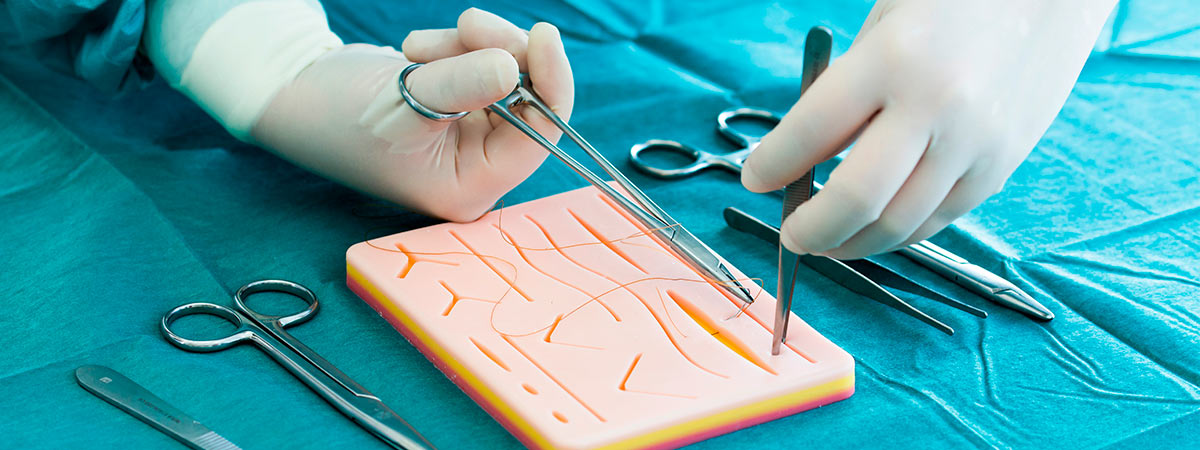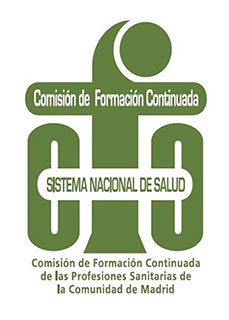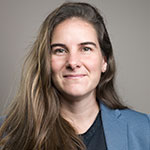Minor Surgery and Sutures Workshop

How to be a self-sufficient doctor in minor surgery and sutures
Minor Surgery has been included in the SERMAS portfolio of Primary Care (PC) services for many years as an activity to be carried out from the PC consultation, universally, provided that the professionals have adequate preparation and training.
In recent years, one of the services offered by health centers in many communities is Minor Surgery, however,
only some family doctors and many fewer pediatricians have decided to undertake this activity, due to lack of time, lack of motivation and above all, due to lack of knowledge and skills.
For this, it is necessary to have specific and practical training in this area, allowing hospitals not to be overloaded, being able to solve the demands of minor surgery and sutures from Primary Care.
Curriculum
Minor Surgery and Sutures Workshop
- Discontinuous sutures:
- Simple stitch
- Simple stitch with inverted knot
- Vertical mattress stitch
- Horizontal mattress stitch
- Semi-buried horizontal mattress stitch
- Punto simple
- Punto simple con el nudo invertido
- Punto colchonero vertical
- Punto colchonero horizontal
- Punto colchonero horizontal semienterrado
- Continuous sutures:
- Simple continuous stitch
- Locking continuous stitch
- Intradermal stitch
- Treatment of skin abscesses
- Incision and placement of Penrose drain, fixing it to the skin.
- Treatment of contaminated wounds:
- Stitches removal and lateral Penrose drain placement.
- Haemostasis of bleeding points:
- Vessel ligation. Transfixion stitch technique.
- Sutures from different types of wounds (complex or flap):
- Wounds shaped as “v", "z", "x", "y", "t".
Professors
 Alfonso López García de Viedma
Course Director
Alfonso López García de Viedma
Course Director
More Academic Info
Aimed at:
Competences
The aim of this course is to provide the medical professional with skills that are generally not acquired in undergraduate training, providing training for:
- Knowing how to act in Primary Care in situations in which minor surgery and sutures are required without resorting to the Hospital Emergencies.
- Acquiring the minimum skills necessary for all resident doctors of any specialty who will have to be on-call in the emergency room within their training as Resident Internal Physician (MIR).
- Knowing how to deal with cases of minor surgery and sutures as doctors who practice in rural areas, labor doctors, sports doctors, doctors in nursing homes, doctors in emergency services, all of them far from hospital care.
- Knowing how to solve cases in which a minor surgery and sutures are required as doctors who could work as aid workers in developing countries or countries in conflict.
Specific Competences
At the end of the course, students will be trained and will have learned to:
- Apply the basic skills acquired to perform the different suturing techniques in a correct, safe and aesthetic way.
- Appropriately address the different types of wounds that may be encountered in their usual practice.
- Perform the closure of the incisions made for the removal of skin lesions.
- Recognize the different suture threads needed in each case and the criteria by which one or the other is chosen.
- Know the criteria by which one type or another of suture is chosen.
- Surgically treat skin abscesses and placement of drains,
- Address the management of contaminated wounds, hemostasis of bleeding vessels, and complex or flap wound sutures.
Objectives
- Provide the knowledge and skills necessary for the correct assessment of wounds and their surgical treatment.
- Train in the practical use of surgical material.
- Show and train in the performance of the different suture techniques (cutaneous, subcutaneous, discontinuous and continuous).
- Assimilate the technique for the treatment of the most common skin lesions.
Teaching methodology
- The course is taught in the form of a practical, face-to-face workshop, for small groups.
- TThe teacher carries out a theoretical presentation with audiovisual support.
- TEach student works individually with surgical material and pigskin, applying the various techniques of minor surgery and sutures that are taught.
- TEach student is trained, instructed, corrected and continuously supervised by the teacher throughout the different units covered in the program, providing personalized training to each student.
- TEach student who has rigorously complied with their attendance to the course is sent teaching material by email consisting of a Suture Manual with color photos of the different surgical techniques, explained and performed in the course, whose author is the professor of the course.
- TEvaluation: A practical exam is taken at the beginning of the course (first day) that has two purposes, on the one hand, to know the level of each of the students in order to adapt the classes to each student or to encourage those who have a lower skill level. On the other hand, to be able to establish the comparison and the results obtained in the training when the course ends, through the subsequent evaluation examination of the practical knowledge acquired. At the end of the training (second day) another practical evaluation test of the acquired knowledge is taken, in which they will have to perform individually each of the sutures and surgical techniques that have been explained during the course. Likewise, at the end of the course, a post-training questionnaire is sent to each student by email, in which they will assess each of the sections with a score of 1 to 10. Once the questionnaires are received, the average and standard deviation of each evaluated section is calculated, noting the observations made to monitor the quality of the course.
- TIt is mandatory to attend both days.


